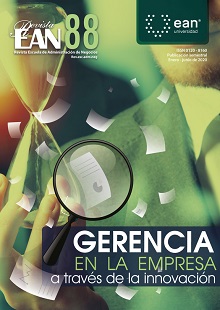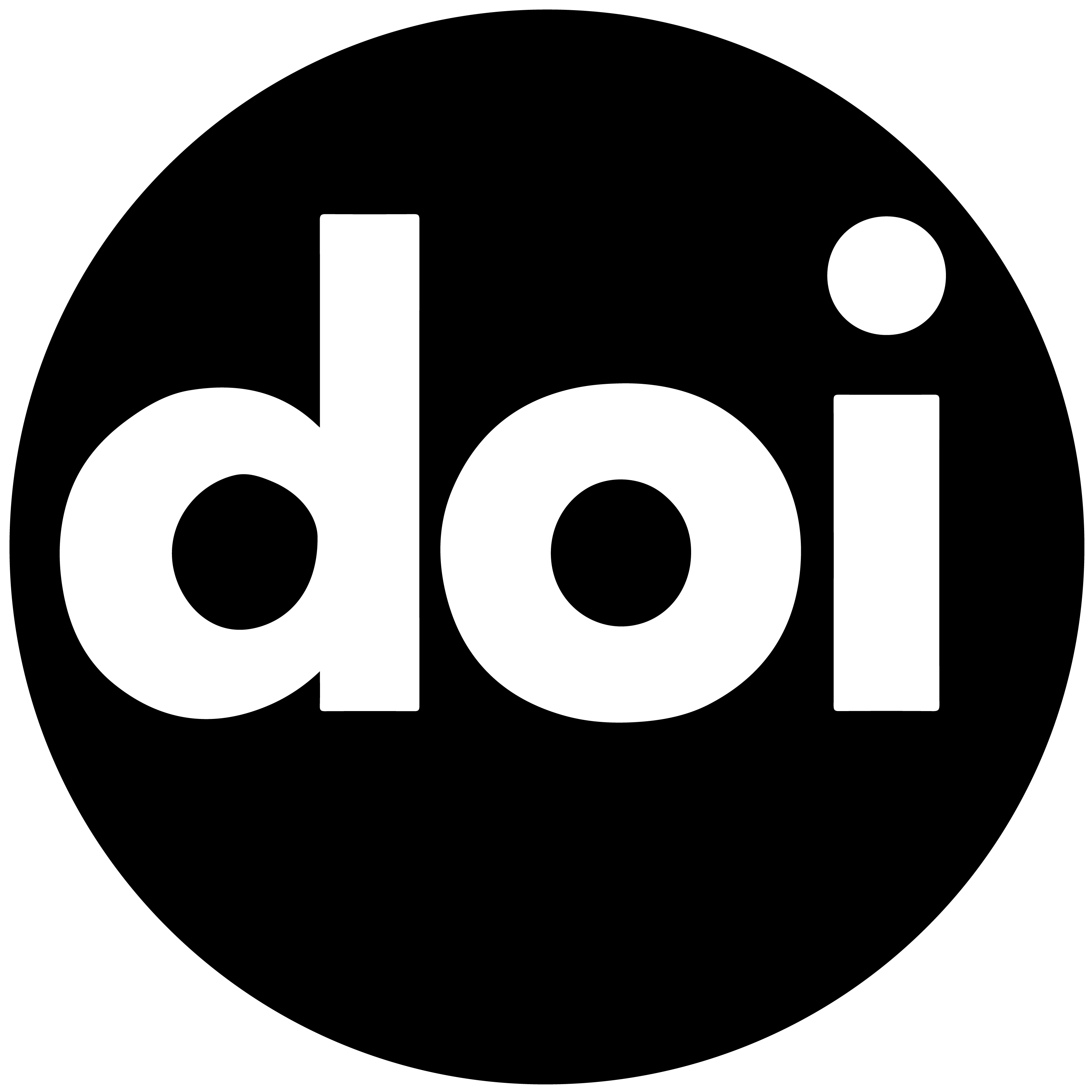Changement organisationnel: un modèle stimulant la transformation
Contenu principal de l'article
Résumé
Rev.esc.adm.neg
Cet article vise à proposer un nouveau modèle de changement organisationnel (CO) basé sur des théories contemporaines remplaçant les approches antérieures pour développer un nouveau cadre conceptuel. Cette investigation a pour but d’aider les dirigeants d’entreprises à comprendre les transformations que traversent les organisations lors des processus de changement organisationnels et de devenir un outil permettant au directeur général de mieux comprendre les scénarios possibles pouvant survenir lors ces processus. Ce modèle holistique prend en compte les différents facteurs de changement :individu-organisation-environnement et propose cinq processus clés: identification de la stratégie, valeur de l'entrepise, personnel de l'organisation, gestion de l'information et évaluation des performances. Le directeur général pourra ainsi établir les bases du changement et définir le processus le plus efficient pour la transformation de son entreprise. En conclusion, ce modèle apparait comme une nouvelle alternative, susceptible d'interprétation, d'application, de remise en question et d'amélioration, pouvant devenir un outil utile aux organisations se trouvant dans des contextes turbulents et incertains. Ce modèle peut être utilisé de manière fractionnée sans qu'il soit nécessaire de le développer dans son intégralité dans la mesure où l'essentiel du processus se concentre dans une capacité de réaction rapide des dirigeants
Renseignements sur l'article
Les références (Voir)
Adam, J. (1995). Risk. Abingdon: Psychology Press.
Alles, M. (2009). Dirección estratégica de recursos humanos: gestión por competencias. Argentina Granica.
Ansoff, H. (1965). Corporate strategy: an analytical approach to business policy for growth and expansion. Nueva York: McGraw-Hill.
Barney, J. (1991). Firm resources and sustained competitive advantage. Journal of Management, 17(1), 99-120. DOI: https://doi.org/10.1177/014920639101700108
Beckhard, R.; Lopera, J.; Casas, H. (1973). Desarrollo organizacional: estrategias y modelos. México, D.F.: Fondo Educativo Interamericano
Beer, M. (1980). Organization change and development: A systems view Goodyear. Santa Monica, CA: Scott Foresman & Co.
Bennis, W. G. (1966). Desarrollo organizacional; su naturaleza, sus orígenes y perspectivas. Mexico D.F: Fondo Educativo Interamericano.
Blake, R. R.; Mouton, J. S.; Bidwell, A. C. (1962). Managerial grid. Advanced Management - Office Executive, 1(9), 12–15.
Boyatzis, R. (1982). The competent manager, a model for effective performance. Nueva York: John Wiley & Sons.
Burke, W. (1994). Organization change: theory and practice. Sage Publications.
Burke, W.; Litwin, G. (1992). A causal model of organizational performance and change. Journal of Management, 18(3), 523-545. DOI: https://doi.org/10.1177/014920639201800306
Castillo, L. (2006). La flexibilidad como capacidad asociada al recurso humano generadora de desempeño organizacional superior (Tesis de maestría). . Manizales: Universidad Nacional de Colombia. Recuperado de https://core.ac.uk/download/pdf/11051563.pdf
Caves, R.; Porter, M. (1977). From entry barriers to mobility barriers: conjectural decisions and contrived deterrence to new competition. The Quarterly Journal of Economics, 91(2), 241-261. DOI: https://doi.org/10.2307/1885416
Celis, F. (2014). Errores comunes en la toma de decisiones estratégicas, un enfoque desde la racionalidad. Revista de Estudios Avanzados de Liderazgo, 1(3), 78-99.
Chandler, A. (1977). The visible hand: the managerial revolution in American business. Cambridge, MA/Londres: The Belknap Press of Harvard University Press.
Chiavenato, I. (2001a). Administración: teoría, proceso y práctica. Bogotá: McGraw-Hill.
Chiavenato, I. (2011b). Fundamentos de administración. ColombiaBogotá: McGraw-Hill.
Collis, D. (1994). How valuable are organizational capabilities. Strategic Management Journal, 15(8), 143-152. DOI: https://doi.org/10.1002/smj.4250150910
Collis, D.; Montgomery, C. (1995). Competing on resources: strategy in the 1990s. Knowledge and Strategy, 74(4),25-40. DOI: https://doi.org/10.1016/B978-0-7506-7088-3.50005-X
Cummings, T. G.; Worley, C. G. (2005). Organization development and change. South Western: Mason.
Delery, J.; Doty, D. (1996). Modes of theorizing in strategic human resource management: tests of universalistic, contingency, and configurational performance predictions. Academy of Management journal, 39(4), 802-835. DOI: https://doi.org/10.5465/256713
Etkin, J. (2000). Política, gobierno y gerencia de las organizaciones: acuerdos, dualidades y divergencias. México: Pearson Educación.
Fleishman, E. A. (1953). Leadership climate, human relations training, and supervisory behavior. Personnel psychology, 6(2), 205-222. DOI: https://doi.org/10.1111/j.1744-
570.1953.tb01040.x
Ford, J. D.; Ford, L. W. (1994). Logics of identity, contradiction, and attraction in change. Academy of management review, 19(4), 756-785. DOI: https://doi.org/10.5465/amr.1994.9412190218
French, W.; Bell, C. (1990). Organization development. Englewood Cliffs, NJ: Prentice-Hall.
French, W.; Bell, C. (1995). Organization development: behavioral science interventions for organization improvement. Englewood Cliffs, NJ: Prentice Hall.
Friedman, T. (2006). La tierra es plana, breve historia del mundo globalizado del siglo XXI. Bogotá: Planeta Colombiana S.A.
García, O. (1999). Administración financiera, fundamentos y aplicaciones. Cali: Prensa Moderna.
Garten, J. (2001). La mentalidad del C.E.O. Bogotá: Editorial Norma.
Gersick, C. (1991). Revolutionary change theories: a multilevel exploration of the punctuated equilibrium paradigm. Academy of Management Review, 16(1), 10-36. DOI: https://doi.org/10.5465/amr.1991.4278988
Gordon, J. (1997). Comportamiento organizacional. México: Prentice Hall.
Greiner, L. E. (1972). Evolution and revolution as organizations grow. Harvard business review, 76(3), 55-64.
Guizar, R. (1998). Desarrollo organizacional: principios y aplicaciones. México: McGraw-Hill.
Gupta, A.; Govindarajan, V. (1984). Business unit strategy, managerial characteristics, and business unit effectiveness at strategy implementation. Academy of Management Journal, 27(1), 25-41. DOI: https://doi.org/10.5465/255955
Hall, E.; Hall, M. (1990). Understanding cultural differences: «Germans, French and Americans» (Vol. 9). Yarmouth: , ME: Intercultural Press, Inc.
Hamel. (2008). El futuro de la administración. Bogotá: Carvajal Education.
Hammer, M.; Champy, J. (1994). Reingeniería. Bogotá: Editorial Norma.
Harris, R. T.; Beckhard, R. (1987). Organizational transitions: Managing complex change. Group & Organization Studies, 2(4), 516-516. DOI: https://doi.org/10.1177/105960117700200422
Hornstein, H. A.; Callahan, D. M.; Fisch, E.; Benedict, B. A. (1968). Influence and satisfaction in organizations; A replication. Sociology of Education, 41(4), 380–389. https://doi.org/10.2307/2112159
Hunt, S. (1997). Resource-advantage theory: an evolutionary theory of competitive firm behavior? Journal of Economic Issues, 31(1), 59-77. DOI: https://doi.org/10.1080/00213624.1997.11505891
Huber, G. P.; Sutcliffe, K. M.; Miller; C. C.; Glick, W. H. (1993). Understanding and Predicting Organizational Change. En Huber y Glick (Eds.). Organizational Change and Redesign: Ideas and Insights for Improving Performance. Oxford: Oxford University Press.
Hunt, S.; Morgan, R. (1996). The resource-advantage theory of competition: dynamics, path dependencies, and evolutionary dimensions. The Journal of Marketing, 60(4), 107-114. DOI: https://doi.org/10.1177%2F002224299606000410
Hyland, T. (1994). Competence, education and NVQS. Dissenting Perspectives. Londres: Cassell.
Jensen, M.; Heckling, W. (1995). Specific and general knowledge, and organizational structure. Journal of applied corporate finance, 8(2), 1-33. DOI: https://doi.org/10.2139/ssrn.6658
Khadem, R.; Lorber, R. (1997). Administración en una página: cómo utilizar la información para lograr
sus metas. Bogotá: Norma.
Kim, W.; Mauborgne, R.; De Hassan, A. (2005). La estrategia del océano azul: cómo crear en el mercado espacios no disputados en los que la competencia sea irrelevante. Bogotá: Grupo Editorial Norma.
Kotler, P. (2006). Dirección de marketing. México: Pearson Education.
Kuhn, T. (1971). La estructura de las revoluciones científicas. México: Fondo de Cultura Económica.
Levy-Leboyer, C. (1997). Gestión de las competencias: cómo analizarlas, cómo evaluarlas, cómo desarrollarlas. París: Les Éditions d´Organisation.
Likert, R. (1967). The human organization: its management and values. New York: McGraw-Hill.
Margerison, C. (2001). Team competencies. Team Performance Management, 7(7/8), 117-122. DOI: https://doi.org/10.1108/13527590110411028
Mayo, E. (1949). The social problems of an industrial civilization. Abingdon: Routledge.
Miller, D.; Toulouse, J. (1986). Chief executive personality and corporate strategy and structure in small firms. Management Science, 32(11), 1389-1409. DOI: https://doi.org/10.1287/mnsc.32.11.1389
Mintzberg, H.; Ahlstrand, B.; Lampel, J. (1998). Strategy Safari: a guided tour through the wilds of strategic mangament. Nueva York: The Free Press.
Moran, J. W.; Brightman, B. K. (2000). Leading organizational change. Journal of workplace learning, 12(2), 66-74. DOI: https://doi.org/10.1108/13665620010316226
Münch, L.; García, J. (1997). Fundamentos de administración. México: Trillas.
Nonaka, I. (1991). The knowledge-creating company. Harvard Business Review, 69(6), 96-104.
Héctor, Ortiz, HO. (1996). Análisis financiero aplicado. Bogotá: Universidad Externado de Colombia.
Payne, A. (2012). Handbook of CRM. Boston: Routledge. DOI: https://doi.org/10.4324/9780080476933
Penrose, E. (1959). The theory of the growth of the firm. Great Britain: Billing & Sons Limited.
Porras, J.; Robertson, P. (1992). Organizational development: theory, practice, and research. En M.D. Dunnette & L. M. Hough (Ed.), Handbook of industrial and organizational psychology (p.719–822). California: Consulting Psychologists Press.Consulting Psychologists Press.
Porter, M. (1990). ¿Competitive advantage of nations: creating and sustaining superior performance. Nueva York: Simon and Schuster. DOI: https://doi.org/10.1007/978-1-349-11336-1
Porter, M. (2011). ¿Qué es la estrategia? Harvard Business Review, 89(11), 100-117.
Prahalad; C. K.; Hamel, G. (1990). The core competence of the corporation. Harvard Business Review, 90(3), 79-90235-256.
Priem, R.; Butler, J. (2001). Is the resource-based «view» a useful perspective for strategic management research? Academy of Management Review, 26(1), 22-40. DOI: https://doi.org/10.5465/amr.2001.4011928
Robbins, S. P. (2004). Comportamiento organizacional. México: Pearson educación.
Rumelt, R. (1991). How much does industry matter? Strategic Management Journal, 12(3), 167-185. DOI: https://doi.org/10.1002/smj.4250120302
Schein, E. (2010). Organizational culture and leadership (Vol. 2). Nueva York: John Wiley & Sons.
Schuler, R. S.; Jackson, S. E. (1987). Linking competitive strategies with human resource management practices. Academy of Management Perspectives, 1(3), 207-219. DOI: https://doi.org/10.5465/ame.1987.4275740
Senge, P. (1995). La quinta disciplina en la práctica: cómo construir una organización inteligente. Bogotá: Grupo Editorial Norma.
Sternberg, R. (1982). Handbook of human intelligence. CUP Archive. Cambridge: University Press
Taylor, F. W. (1971). Principios de la administración científica. México: Herrera Hermanos.
Teece, D. (1980). Economies of scope and the scope of the enterprise. Journal of Economic Behavior & Organization, 1(3), 223-247. DOI: https://doi.org/10.1016/0167-2681(80)90002-5
Teece, D.; Pisano, G.; Shuen, A. (1997). Dynamic capabilities and strategic management. Strategic Mangement, 18(7), 509-533. DOI: https://doi.org/10.1002/(SICI)1097- 0266(199708)18:7<509::AID-SMJ882>3.0.CO;2-Z
Trist, E.; Murray, H. (1993). The social engagement of social science, volume II: The socio-technical perspective. Philadelphia: University of Pennsylvania Press. DOI: https://doi.org/10.9783/9781512819052
Van Horne, J; Wachowicz, J. (2002). Fundamentos de administración financiera. Naucalpan de Juárez: Pearson Educación.
Téléchargements
##plugins.generic.pfl.publicationFactsTitle##
##plugins.generic.pfl.authorStatements##
##plugins.generic.pfl.indexedIn##
-
##plugins.generic.pfl.indexedList##
- ##plugins.generic.pfl.academicSociety##
- Universidad Ean
- ##plugins.generic.pfl.publisher##
- Universidad Ean









